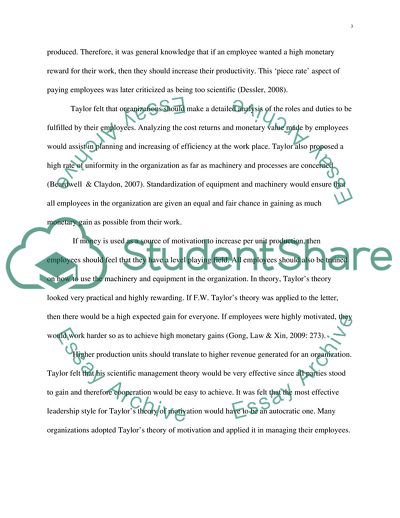Cite this document
(DRAWING UPON THE DIFFERENT THEORIES OF MOTIVATION YOU HAVE STUDIED IN Essay, n.d.)
DRAWING UPON THE DIFFERENT THEORIES OF MOTIVATION YOU HAVE STUDIED IN Essay. https://studentshare.org/psychology/1788421-drawing-upon-the-different-theories-of-motivation-you-have-studied-in-classdicuss-fw-taylors-view-that-money-is-the-greatest-motivator-of-all-in-the-workplace
DRAWING UPON THE DIFFERENT THEORIES OF MOTIVATION YOU HAVE STUDIED IN Essay. https://studentshare.org/psychology/1788421-drawing-upon-the-different-theories-of-motivation-you-have-studied-in-classdicuss-fw-taylors-view-that-money-is-the-greatest-motivator-of-all-in-the-workplace
(DRAWING UPON THE DIFFERENT THEORIES OF MOTIVATION YOU HAVE STUDIED IN Essay)
DRAWING UPON THE DIFFERENT THEORIES OF MOTIVATION YOU HAVE STUDIED IN Essay. https://studentshare.org/psychology/1788421-drawing-upon-the-different-theories-of-motivation-you-have-studied-in-classdicuss-fw-taylors-view-that-money-is-the-greatest-motivator-of-all-in-the-workplace.
DRAWING UPON THE DIFFERENT THEORIES OF MOTIVATION YOU HAVE STUDIED IN Essay. https://studentshare.org/psychology/1788421-drawing-upon-the-different-theories-of-motivation-you-have-studied-in-classdicuss-fw-taylors-view-that-money-is-the-greatest-motivator-of-all-in-the-workplace.
“DRAWING UPON THE DIFFERENT THEORIES OF MOTIVATION YOU HAVE STUDIED IN Essay”. https://studentshare.org/psychology/1788421-drawing-upon-the-different-theories-of-motivation-you-have-studied-in-classdicuss-fw-taylors-view-that-money-is-the-greatest-motivator-of-all-in-the-workplace.


